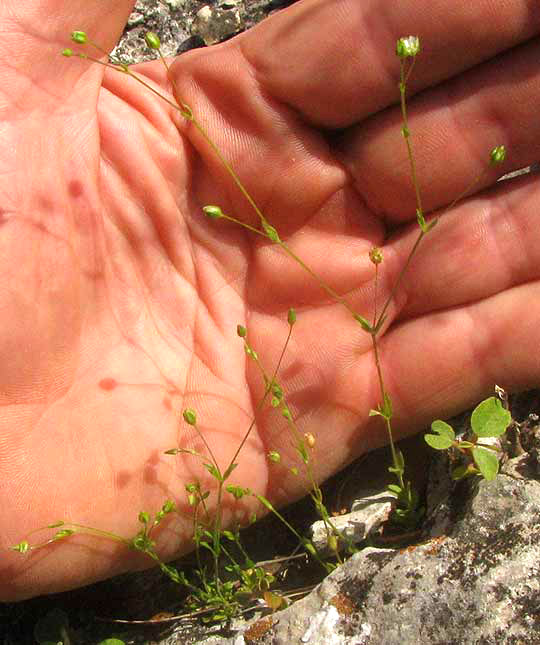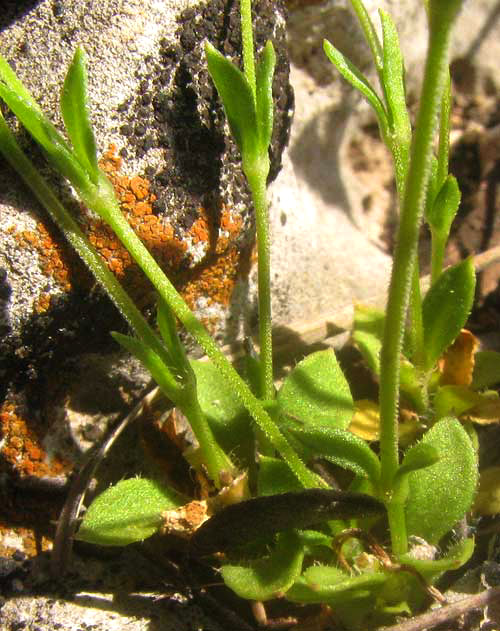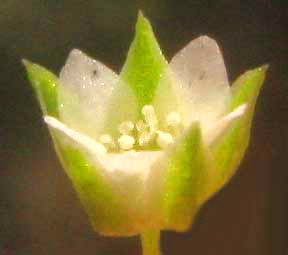Excerpts from Jim Conrad's
Naturalist Newsletter
from the April 13, 2014 Newsletter issued from the Frio Canyon Nature Education Center in the valley of the Dry Frio River in northern Uvalde County, southwestern Texas, on the southern border of the Edwards Plateau; elevation ~1750m (~5750 ft); N29.62°, W99.86°; USA
HILLY SANDWORT
Only a foot or so from the Split-leaf Gilia, from a crack in the hard Edwards Limestone, grew the smaller, even more delicate-looking plant shown below:

Interestingly, this plant isn't closely related to the Gilia, yet also its flowers are diffused throughout an inflorescence seemingly much too large for its tiny stems and leaves. Also, as with the Gilia, its blossoms stand at the tips of long stems, or pedicels. I'm guessing that in such wind-swept habitats where decent soil only spottily occurs, flowers disposed in this manner are better able to disperse their seeds over longer distances. I can visualize on windy days the inflorescences being knocked back and forth causing the split-open capsular fruits atop their long, limber pedicels to toss seeds in every direction.
You can see its opposite leaves (two per stem node) and basal leaves below:

A close-up of one of its flowers, only about 1/8th inch high (3mm), is shown below:

With its opposite leaves and flower structure, you might guess that this little plant is closely related to chickweed, dianthus and campion, which it is. It's the Hilly Sandwort, ARENARIA BENTHAMII, like chickweed and the others a member of the Pink Family, the Caryophyllaceae. It's endemic to a couple of states in arid northeastern Mexico, but mostly in southwestern and central Texas, and spottily in New Mexico, Oklahoma and Louisiana. Its habitat is described as "Open woodlands, limestone slopes and outcrops," so it's comfortably at home atop our limestone hill.
I read that the various sandwort species traditionally have been used as medicine to treat kidney stones. Plants growing in cracks in rocks often are similarly used, based on the ancient Doctrine of Signatures. That concept suggests that plants "sign" to people what their "purposes" are, so by growing in rock cracks, sandworts "sign" their usefulness in crushing stones, such as kidney stones. I suspect that the Doctrine of Signatures has made life miserable for a lot of people and killed quite a few.